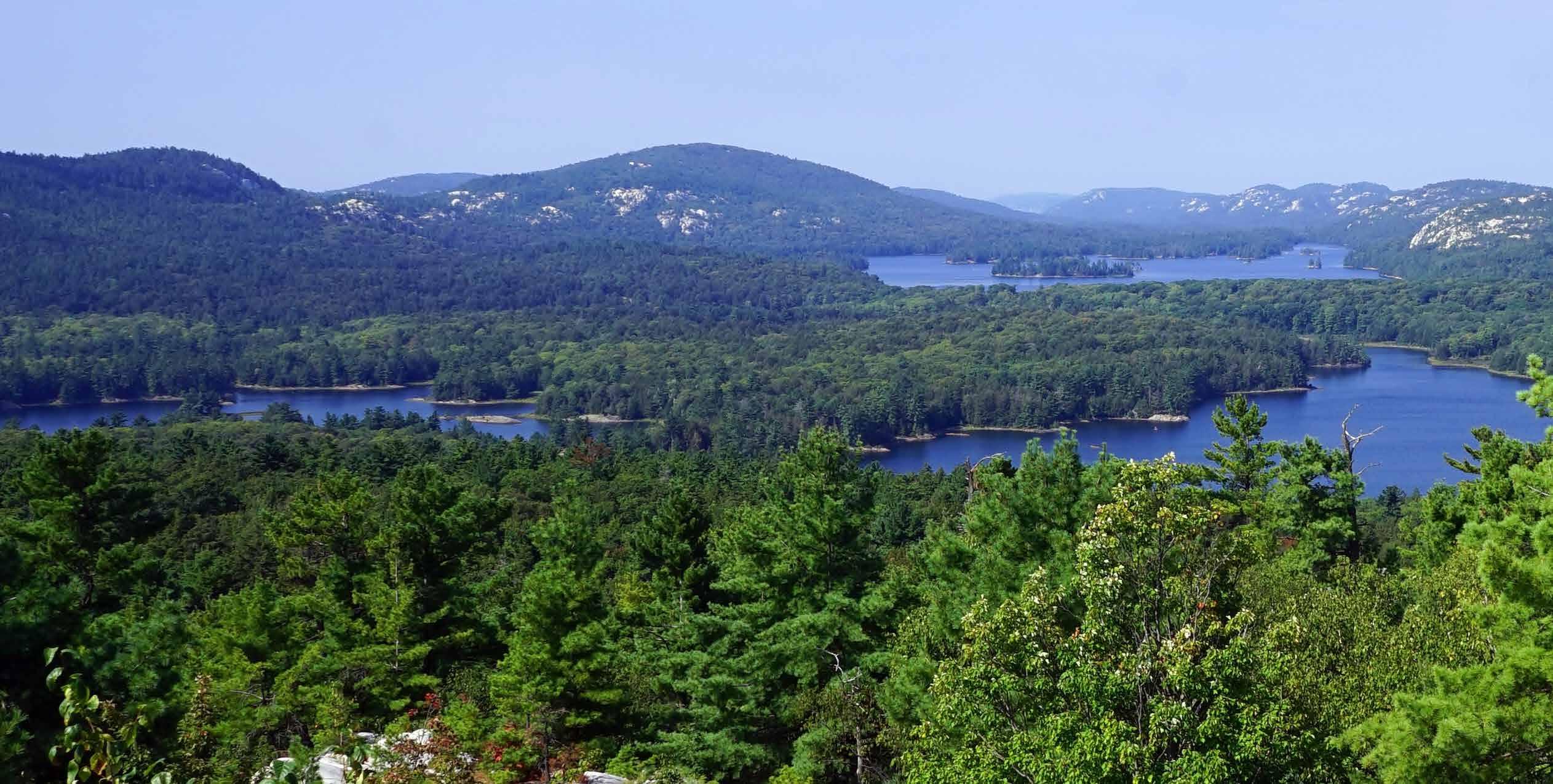
4 minute read
Canoeing for Caribou
Citizen scientists gather critical data in Ontario’s last wilderness frontier
words :: Conor Mihell
A cold wind offers welcome respite from the blackflies and mosquitoes on an early July canoe trip in the lakes surrounding Wabakimi Provincial Park. But that’s the only relief we’re getting from the northwestern Ontario gale. Pinned down by downpours and whitecaps, huddled in toques beneath a billowing tarp, we wonder when we’ll be able to start on the work we’ve volunteered to do. Our group of seven came here for a canoe adventure out of the norm: the inaugural boreal caribou survey trip, organized by the Friends of Wabakimi (FOW), a nonprofit conservation group. We’re eager to get out and start collecting data, but so far inclement weather is thwarting our plans.
Boreal, or woodland, caribou are the ghosts of Canada’s northern forests. They have far different survival strategies from the closely related migratory caribou, which move huge distances in great numbers across the subarctic barrenlands. Boreal caribou are secretive and sedentary, ranging from northern British Columbia and the southern Yukon and Northwest Territories east to Labrador, at low population densities in mature spruce forests. They are tremendous swimmers and females seek refuges on large, island-pocked bodies of water to give birth to calves each spring. That’s where our surveys fit in.
Starting in 2024, FOW received three years of funding from the Ontario government to recruit volunteer citizen scientists to gather evidence of boreal caribou, a species that’s listed as threatened under both Ontario and federal species at risk legislation. We’ve been trained in a protocol, developed by caribou experts, that involves looking for scat, tracks, bedding sites, shed antlers and live animals on selected bodies of water where caribou presence is suspected. Our data will fill in knowledge gaps and highlight areas outside the 892,000-hectare protected boundaries of Wabakimi Provincial Park where caribou and the resource industry are on a collision course— hastened by a recent Ontario proposal to repeal provincial endangered species legislation to fast-track mining for critical minerals across this relatively pristine region.
We’re not expecting much when four of us pull GORE-TEX shells over our damp layers and finally set off in canoes, hugging the shore and clawing into the wind to conduct a caribou survey at the narrow tip of an island. We drag the canoes onto shoreline rocks, stumble through dense bush and fumble with cold fingers, labeling the GPS waypoint and datasheet. Then we fan out into the woods, looking for natural runways caribou are mostly likely to follow. Moments later, we’re overtaken by excitement when Brian Beney, one of the FOW board members who spearheaded the caribou project, discovers scat, which resembles a small pile of coffee beans in the moss. We share smiles and high fives for the project’s first evidence, which we photograph and tally on our datasheet. imposing emergency measures, like it did in a last-ditch effort to resuscitate three populations of boreal caribou in Quebec in 2024, Ottawa negotiated a caribou agreement with Ontario. The agreement acknowledges the vulnerability of caribou to industrial development, but it prioritizes data collection—such as the FOW’s caribou project— and habitat restoration over imposing hard rules on forestry, mining and other resource development. Environmental groups chastised the agreement as “a plan to make plans” without prioritizing habitat protection, yet it also puts the spotlight on Ontario to finally take action.
Caribou are immortalized on Canada’s 25-cent coin; they’re also potent symbols of wilderness—wild rivers, pristine lakes and vast blank spots on the map, which are becoming increasingly scarce in the face of a juggernaut of development. To embark on a canoe journey in caribou habitat is to experience some of the last remaining wilderness on the planet. Both wilderness and caribou face similar threats.
Research shows that logging alters caribou habitat to be more suitable for moose; with moose come greater numbers of wolves and black bears; and roads and transmission corridors further tip the balance by affording easy mobility to predators. This pattern has played out across Ontario’s historic range in a “slow-motion crisis,” explains Jim Schaefer, a boreal caribou researcher and professor of conservation biology at Trent University.
The province’s caribou population is estimated at 5,000. About half of the species’ historic Ontario habitat has been permanently lost since 1880. You only have to look at maps of central and northern Ontario to see the “geography of loss,” Schaefer says. The name “Caribou Lake” is common in Ontario, with 20 bodies of water bearing the name. Many of these are located in places like Algoma and Temagami—regions where the species has long since disappeared.

Biologists first voiced concerns about the long-term viability of Ontario’s boreal caribou population in 1949. Studies have repeatedly shown that habitat disturbance must be kept below 35 per cent to provide boreal caribou with a 60 per cent chance of self-sufficiency. This benchmark has been set by the federal government since 2012; however, it has never been adhered to by provinces like Ontario, where forestry has been granted a permanent exemption from the current Endangered Species Act. Meanwhile, seven of eight discrete boreal caribou ranges in Ontario that overlap with commercial logging have declining population trends.
The federal government is legally obligated to intervene when a province is not doing enough to protect at-risk species. Rather than
Better weather the next day allows us to get down to looking for caribou in earnest. Working in teams of two, we paddle from island to island, landing our canoe on slippery logs and rocks and crashing through bush. After a few surveys, the species’ preferred habitat is quickly apparent: open spruce forests with abundant lichen and dense sphagnum moss, and particularly areas with some elevation to catch the breeze and afford panoptic views of the surrounding waters. In a few of these places we find the circular depressions of caribou bedding sites, with compacted moss littered with scat and tufts of straw-like fur revealing areas where animals rested. About midway through our trip, Brian and his wife, Lynn, return from a morning of surveys gushing about an exciting encounter. Lynn heard rustling and looked up to see movement at the water’s edge. “I know you’re supposed to be quiet,” she tells us, “but I shrieked!” Brian’s video captures the characteristic forms of two caribou, swimming powerfully across an inlet.
As a paddler, it is immensely satisfying to be working toward conservation. Environment and Climate Change Canada notes that “protecting boreal caribou’s critical habitat is expected to improve outcomes for 80 other listed species at risk,” including wolverine and many rare songbirds. Our trip, along with two others later in the summer, yielded caribou evidence at 21 locations. Eight trips are planned for this year, with volunteer surveys anticipated to continue into 2026. Every contribution helps, Jim Schaefer says, in tackling “the most formidable conservation challenge we have in Canada”— made even greater as the country forges a new place in emerging socio economic realities.





